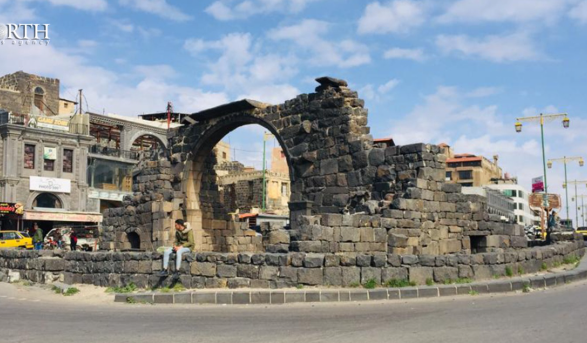Sweida Governorate is located in southeastern Syria and is known for its natural beauty and ancient history, spanning an area of approximately 5,550 square kilometers. The governorate boasts a unique geographical location that combines mountains and vast plateaus, making it a region rich in heritage and culture.
1. Historical Overview
Sweida has a history spanning thousands of years, as it's an area with ancient Aramaic roots, and it was also influenced by numerous civilizations like the Romans and Byzantines. Historically known as "Saida," it was a center for ancient civilizations and religions. The governorate has played an important role in Syria's modern history, especially due to its unique Druze community and ancient traditions.
2. What is it Known For?
- Agriculture: It's famous for cultivating fruits such as apples, cherries, grapes, and pomegranates, in addition to grains.
- Druze Heritage: Sweida is a major center for the Druze community, which gives it a special culture and customs.
- Traditional Crafts: Especially the production of pottery and hand-woven textiles.
3. Key Tourist and Historical Landmarks
- Ancient Shahba City: An important archaeological site containing Roman and Byzantine temples.
- Deir Mar Anton: One of the ancient monasteries the governorate is famous for.
- Traditional Villages: Such as Sweida town, which reflects authentic Syrian architectural heritage.
- Jabal al-Arab (Black Mountain): Considered one of the most important natural landmarks in the region.
4. Geography and Climate
Sweida is characterized by mountainous terrain and vast plateaus, with widespread forests and fertile agricultural lands. The climate is moderately cold in winter and hot and dry in summer, which is suitable for cultivating many fruits and crops.
5. Culture and Customs
The governorate enjoys a rich culture stemming from Druze traditions, with special celebrations and festivals that reflect the community's history and traditions. Handicrafts and folk arts play a significant role in preserving cultural heritage. The local cuisine features distinctive dishes like "Mujaddara" and "Mansaf."
6. Economic Activities
The governorate primarily relies on agriculture, with fruits and agricultural crops forming the backbone of the economy. There are some handicrafts and small industries that contribute to the residents' income. The governorate has great tourism potential, especially in its mountainous areas and archaeological sites.
7. Major Cities and Towns
- Sweida (Capital)
- Shahba
- Salkhad
- Shahar
- Nasib
8. Infrastructure and Services
The governorate has a road network connecting it to neighboring governorates, in addition to an internal network linking its cities and villages. Educational and health services are available, with medium-sized hospitals and health centers. Efforts are ongoing to develop infrastructure and enhance services in rural areas.
9. Current Situation and Challenges
The governorate has maintained relative stability during the years of conflict, which has helped life continue relatively normally. It faces economic and social challenges, with continuous efforts to improve development opportunities and infrastructure. The governorate serves as an example of community coexistence and sectarian balance in Syria.
10. Prominent Figures
- Several religious and cultural figures from the Druze community.
- Intellectuals and writers who have contributed to Syrian culture.

